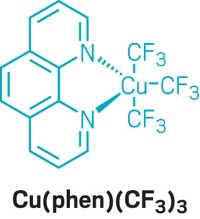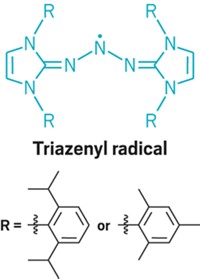Advertisement
Grab your lab coat. Let's get started
Welcome!
Welcome!
Create an account below to get 6 C&EN articles per month, receive newsletters and more - all free.
It seems this is your first time logging in online. Please enter the following information to continue.
As an ACS member you automatically get access to this site. All we need is few more details to create your reading experience.
Not you? Sign in with a different account.
Not you? Sign in with a different account.
ERROR 1
ERROR 1
ERROR 2
ERROR 2
ERROR 2
ERROR 2
ERROR 2
Password and Confirm password must match.
If you have an ACS member number, please enter it here so we can link this account to your membership. (optional)
ERROR 2
ACS values your privacy. By submitting your information, you are gaining access to C&EN and subscribing to our weekly newsletter. We use the information you provide to make your reading experience better, and we will never sell your data to third party members.
Physical Chemistry
Titanium dioxide’s elemental charge states reevaluated
Titanium(III) rather than titanium(IV) could lead to reassessment of compound’s redox chemistry
by Jyllian Kemsley
April 17, 2017
| A version of this story appeared in
Volume 95, Issue 16
Most chemists would describe titanium dioxide as an ionic compound composed of Ti4+ and two O2–. Not so, suggests a theoretical analysis: TiO2 is better described with the charge states Ti3+ and O1.5– and has some covalent character to its bonds (J. Phys. Chem. Lett. 2017, DOI: 10.1021/acs.jpclett.7b00313).
TiO2 is commonly used as a photocatalyst and in solar cells and battery electrodes. In these applications, understanding of TiO2’s chemistry is largely based on the assumption that the charge states are Ti4+ and O2–, and consequently that the titanium cannot be further oxidized nor the oxygen further reduced.
But no direct experimental evidence shows that those are the oxidation states. In fact, some computational quantum analysis has suggested that TiO2’s electronic structure might not be as simple as assumed.
Inspired by that analysis, Daniel Koch and Sergei Manzhos of the National University of Singapore systematically explored the electronic structure of TiO2 using multiple theoretical methods to study individual TiO2 molecules as well as the mineral forms rutile and anatase.
In their new description of TiO2, Ti3+’s remaining valence electron is localized within a radius that is shorter than half of the Ti–O bond length and has contributions from s and d states. On the basis of their calculations that the titanium in TiO2 is Ti3+, they concluded that the oxygens must be O1.5–.
The results suggest that the chemistry of TiO2 may need to be reconsidered, particularly in redox systems that could involve additional oxidation of titanium and reduction of oxygen, the researchers say.





Join the conversation
Contact the reporter
Submit a Letter to the Editor for publication
Engage with us on Twitter